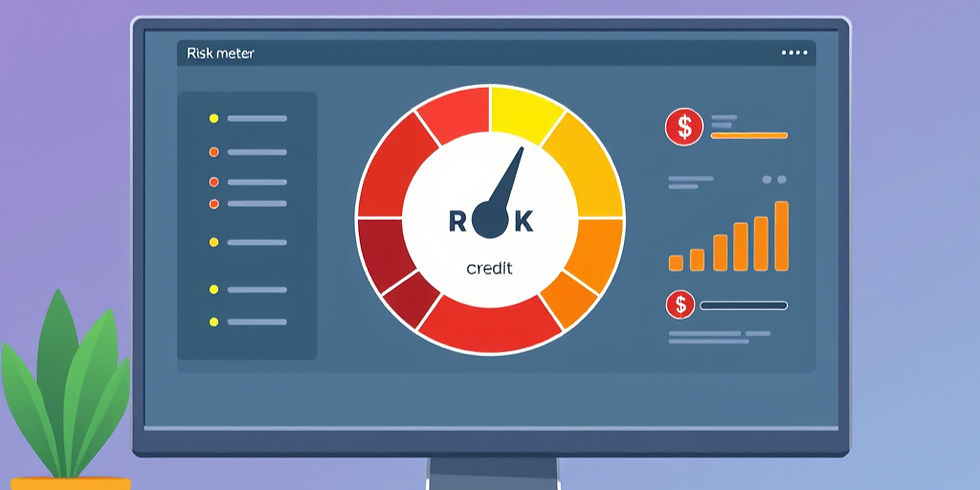How to Protect Your Business from Credit Surprises and Strengthen Financial Resilience
- Mike Floyd, MBA

- Aug 26
- 3 min read

If you're running a business and juggling growth plans with financial responsibilities, you're probably no stranger to sleepless nights.
Maybe it’s wondering if your cash flow can weather the next quarter, or if that one big customer is taking a little too long to pay.
Either way, the phrase “credit risk” starts ringing alarm bells. And for good reason. Managing credit exposure is not just about protecting your balance sheet; it’s about future-proofing your business.
At Procuris Consulting, we work with clients every day who want to strengthen their financial resilience, and that often starts with developing strong credit risk models, regularly reviewing exposure, and building relationships with multiple lenders. Let's unpack how these strategies help you stay ahead of risk and position your business for steady growth.
A solid credit risk model is like a financial weather forecast. It won’t stop the storm, but it gives you enough warning to bring in the patio furniture. Too often, businesses extend credit to customers or take on debt without a clear understanding of the risks. A good credit risk model helps you assess who you’re dealing with before you hand over goods or services on a promise. It considers historical payment behavior, industry trends, economic conditions, and customer-specific data. But it shouldn’t stop there. Your model needs to evolve. What worked during a low-interest environment five years ago might not be effective when rates spike or supply chains tighten.
That brings us to regular credit exposure reviews. Think of this as a health check-up for your balance sheet. You want to understand not just who owes you money, but how concentrated that risk is. Are 80% of your receivables tied up in two accounts? That’s like hiking with a sprained ankle. You might make it, but one wrong step and it’s a disaster. By regularly reviewing your exposure, you catch warning signs early. Maybe one of your clients is slowly stretching payment terms from 30 days to 60. That’s not just a red flag—it’s practically a billboard saying, “We might be struggling.” Proactively addressing those signals can prevent write-offs and preserve your cash flow.
Then there’s the lender piece. Many small and mid-sized businesses build deep relationships with one bank or financing partner. It feels comfortable and reliable. But relying on one lender is like walking a tightrope with no net. If that lender tightens credit or changes terms, your funding options can vanish overnight. Diversifying your lending sources doesn’t mean you’re being disloyal. It means you’re being smart. Different lenders have different appetites, specialties, and cycles. Some might love equipment financing, others are better suited for working capital lines. Building relationships with multiple lenders gives you flexibility when you need it most.
This is where working with a fractional CFO can make a real difference. At Procuris Consulting, we help clients create and refine credit risk models that align with their industry and customer base. We don’t just build the model and walk away. We help you set up review cadences, implement reporting systems, and monitor exposure trends. We also help identify and negotiate with lenders, so you’re never stuck with a single source of capital. Think of us as the bridge between where your finances are now and where they need to be.
It’s easy to focus on topline growth, but sustainable growth is built on strong financial infrastructure. Developing thoughtful credit risk models, regularly reviewing your credit exposure, and building a diversified lending strategy aren’t just good practices. They’re essential for long-term stability. And they don’t have to be overwhelming. With the right partner, like a Procuris Consulting fractional CFO, you can strengthen your financial foundation and sleep just a little easier at night.




Comments